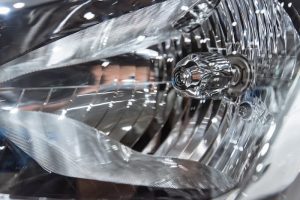It may feel bad sometimes knowing that the law by the government restricts a lot of things for individuals in the state, they tell you how to spend your own money, what kinds of products to buy, and even down to headlight laws – best way to use car headlights. But in the end, it is all for our own good and for the good of other drivers on the road like the self dimming headlights.
It is also wise to periodically check your headlights and make sure they are in good condition so you don’t end up being pulled over or worse appearing in court and paying a hefty fine. Did you know that by law, there are certain headlight types to use at certain climates? For instance, when it’s raining or snowing or some other form of climatic conditions, different headlight types are required by the state. It is usually in the best interest of every driver to keep abreast of all things headlights as regarding the state laws and requirements. While there are different headlight laws out there, there are also different methods of restoring headlights to avoid getting pulled over.
For instance, in Georgia, there are different types of requirements for headlights pertaining to even times of the day. Fortunately, we have taken the liberty to bring some of these laws to your notice to enable you to drive your car safely and avoid traffic and road safety violations.
Headlight requirements by state

In the United States, every state has its own law about car headlights, rare lights, hazard lights, and high beams. To keep you abreast of the headlight law in your own state, below are the general regulations pertaining car headlights for each state in the USA. While these laws have been researched it’s recommended that you contact the department of motor vehicles in your state for additional verification before making any adjustments to your car headlights.
Alaska
Headlights
- Headlights must be switched on and be in use from 30 minutes after sunset until 30 minutes before sunrise.
- Headlights must be turned on when you cannot see at least 1000 feet away from your car.
High Beams
- High beams must be dimmed when approaching traffic within 500 feet from you .
- High beams must also be dimmed when following within 300 feet of another vehicle.
Alabama
Headlights
- Headlights must be in use from 30 minutes after sunset until 30 minutes before sunrise.
- Headlights must also be switched on when you cannot see above 500 feet from you.
High Beams
- High beams must be dimmed when approaching traffic within 500 feet from your car.
- High beams must also be dimmed when following another vehicle within 200 feet from your car.
Arkansas
Headlights
- Headlights must be in use from 30 minutes after sunset until 30 minutes before sunrise.
- Headlights must also be in use when you cannot see more than 500 feet from you while driving.
- Headlights are must be turned on when windshield wipers are in use.
High Beams
- High beams must be dimmed when approaching traffic within 500 feet from your vehicle.
- High beams must also be dimmed when following another vehicle within 200 feet from you.
- High beams must not be used in fog, rain, or snow.
Arizona
Headlights
- Headlights must be turned on and be in use from sunset to sunrise.
- Headlights should be used when driving during snowing conditions or in in ice.
High Beams
- High beams must be dimmed when approaching traffic that’s within 500 feet from you.
- High beams must also be dimmed when following a vehicle 200 feet from you.
- High beams should not be used in fog.
CALIFORNIA
Headlights
- Both headlights must be on when it’s snowing, raining, cloudy, or foggy. Also, you are required to put on your headlights if you must use your windshield wipers.
- Headlights must be switched on if you cannot see at least 1000 feet away from you.
- Headlights must be in use from 30 minutes after sunset until 30 minutes before sunrise.
- It’s also recommended in the California driver’s handbook to put on the headlight when driving up the mountains or on country roads even on sunny days to make it easy for other drivers to see you.
High Beams
- High beams must be dimmed when approaching traffic is within 500 feet.
Connecticut
Headlights
- Two headlamps are required to be switched on, and must be mounted at least 22 inches above the ground but not more than 54 inches from the car.
- Headlights must display either a white or amber light, which is visible at least 1000 feet in front of the vehicle.
High Beams
- High beams must be dimmed when approaching traffic that’s about 500 feet from the vehicle.
- High beams must also be dimmed when following a car within 300 feet from yours.
Colorado
Headlights
- Headlights must be turned on from sunset to sunrise or when you cannot see at least 1000 feet in front of you.
- Parking lights must be left on any vehicle parked alongside the roadway, whether attended or not, from sunset to sunrise or whenever you cannot see at least 1000 feet in front of you.
High Beams
- High beams or fog lights must be dimmed when approaching traffic that’s within 500 feet from you.
- High beams or fog lights must also be dimmed when following a vehicle within 200 feet of your car.
- High beams should not be used in fog; low beams or fog lights are appropriate.
District of Columbia
Headlights
- Headlights must be in use from 30 minutes before sunrise until 30 minutes after sunset.
- Headlights must be in use whenever you cannot see at least 500 feet in front of you.
- Headlights must also be in use any time the windshield wipers are in use.
- You must not use parking lights while driving.
High Beams
- High beams are to be used in open country.
- High beams should not be used while street lights are on.
- High beams must be dimmed when approaching traffic within 500 feet.
- High beams must be dimmed when following a vehicle within 300 feet.
Delaware
Headlights
- Two white headlights are required with multiple beams, one on each side of the front of the vehicle.
- Headlights are required anytime windshield wipers are in use.
- Headlights are to be installed between 54 inches and 24 inches from the ground.
- Headlights must be in use from sunset to sunrise or when you cannot see more than 1000 feet in front of you.
High Beams
- High beams must be dimmed when approaching traffic within 500 feet.
- High beams must be dimmed when following within 200 feet of another vehicle.
Florida
Headlights
- Headlights must be turned on and in use from sunset to sunrise.
- Low beams should be used when traveling about 25 miles per hour.
High Beams
- High beams should be used when traveling more than 25 miles per hour.
- High beams must be dimmed when approaching traffic within 500 feet of the car.
- High beams must be dimmed when following another vehicle within 300 feet of the car.
Georgia
Headlights
- Headlights must be in use from 30 minutes after sunset until 30 minutes before sunrise.
- Headlights must also be in use when there is limited visibility or while it is raining.
High Beams
- High beams are to be used only in rural areas.
- High beams must be dimmed when approaching traffic within 500 feet of the car.
- High beams must be dimmed when following within 200 feet of another vehicle.
- High beams should not be used on lighted roads or when driving in fog, rain, snow, or smoke.
- High beams are not permitted when you cannot see at least 200 feet ahead of you.
Hawaii
Headlights
- Headlights must be in use 30 minutes after sunset to 30 minutes before sunrise.
- Headlights must be turned on when you cannot see at least 500 feet in front of you.
- Headlights must be switched on when during heavy rain, snow, or fog or light is insufficient to see.
High Beams
- High beams must be dimmed when meeting oncoming traffic within 500 feet.
Idaho
Headlights
- Headlights are required 30mins from sunrise until 30mins after sunset.
- Headlights must be turned on when you cannot see at least 500 feet ahead of you.
High Beams
- High beams must be dimmed when approaching traffic within 500 feet.
- High beams must also be dimmed when following a vehicle within 200 feet ahead of you.
Indiana
Headlights
- Headlights must be in use from 30mins from sunrise until 30mins after sunset.
- Headlights must be in use when you cannot see at least 500 feet in front of you.
High Beams
- High beams must be dimmed when approaching traffic within 500 feet away from you.
- High beams must also be dimmed when following within 200 feet of another vehicle.
Iowa
Headlights
- Headlights must be in use from sunset to sunrise and any time you cannot see more than 500 feet in front of you.
High Beams
- High beams must be dimmed when approaching traffic is 1000 feet away from your car.
- High beams must also be dimmed when following a vehicle within 400 feet from you.
Kansas
Headlights
- Headlights must be in use from sunset to sunrise.
- Headlights must be in use when you cannot see more than 1000 feet in front of you.
- Headlights are also required when the windshield wipers are on.
- Headlights are necessary when driving through fog or smoke.
High Beams
- High beams must be dimmed when other vehicles are approaching or when driving in fog.
Kentucky
Headlights
- Two headlights are required when driving from 30 minutes after sunset until 30 minutes before sunrise.
- Headlights must be switched on when visibility is low and only white or amber lights are allowed.
High Beams
- High beams must be bright enough to allow you clearly see a person at least 350 feet in front of you.
- High beams must be dimmed when approaching traffic within 500 feet away from you.
- High beams must also be dimmed when following a vehicle within 200 feet from you.
Louisiana
Headlights
- Headlights must be in use from sunset to sunrise and whenever windshield wipers are in use.
- Headlights should be turned on when you cannot see above 500 feet from your vehicle while driving.
High Beams
- High beams must be dimmed when approaching traffic within 500 feet from you.
- High beams must also be dimmed when following a vehicle with 200 feet.
Maine
Headlights
- Headlights must be in use from 30 minutes after sunset to 30 minutes before sunrise.
- Headlights must be on if the windshield wipers are in use.
- Headlights must be used when you cannot see at least 1000 feet in front of you.
High Beams
- High beams must be dimmed when approaching traffic is within 500 feet.
- High beams must also be dimmed when following within 300 feet of another vehicle.
Maryland
Headlights
- Headlights must be in use when you cannot see at least 1000 feet ahead of you.
- Headlights are required when windshield wipers are in use.
High Beams
- High beams must be dimmed when approaching traffic is within 500 feet.
- High beams must also be dimmed when following within 300 feet of another vehicle.
Massachusetts
Headlights
- Headlights must be turned on and be in use from 30 minutes after sunset until 30 minutes before sunrise.
- Headlights must be used when you cannot see at least 500 feet in front of you and when windshield wipers are turned on.
- Headlights must also be turned on when driving through a tunnel.
High Beams
- High beams must be dimmed when approaching traffic within 500 feet of you.
- High beams must also be dimmed when following a car about 200 feet away from you.
Michigan
Headlights
- Headlights must be in use from sunset to sunrise and must be turned on when it is snowing, raining, sleeting, or hailing.
- Headlights are required when you cannot see at least 500 feet ahead of you.
High Beams
- High beams must be dimmed when approaching traffic within 1000 feet.
- High beams must also be dimmed when following within 200 feet of another vehicle.
Minnesota
Headlights
- Headlights must be in use from sunset to sunrise and must be used during rain, snow, hail, sleet, and fog.
- Headlights must also be turned on when you cannot see more than 500 feet ahead of you.
High Beams
- High beams should be used whenever possible but must be dimmed when approaching traffic within 1000 feet and when following a car within 200 feet.
- High beams should not be used for parked cars and should be dimmed when driving behind a commercial vehicle at night.
Mississippi
Headlights
- Headlights must be in use from sunset to sunrise and must also be in use when you cannot see at least 500 feet ahead of you.
High Beams
- High beams must be dimmed when approaching traffic within 500 feet.
Missouri
Headlights
- Headlights must be in use from 30 minutes after sunset until 30 minutes before sunrise and must also be in use any time your windshield wipers are in use.
High Beams
- High beams must be dimmed when approaching traffic is within 500 feet.
- High beams must also be dimmed when following a car within 300 feet.
Montana
Headlights
- Headlights must be in use from 30 minutes after sunset to 30 minutes before sunrise.
- Headlights are required when you cannot see at least 500 feet ahead of you.
High Beams
- High beams must be dimmed when approaching traffic is within 1000 feet.
- High beams must also be dimmed when following within 500 feet of another vehicle.
Nebraska
Headlights
- Headlights must be in use from sunset to sunrise and when you cannot see at least 500 feet.
High Beams
- High beams must be dimmed when approaching oncoming traffic and when following a car within 200 away from you.
Nevada
Headlights
- Headlights must be in use from 30 minutes after sunset until 30 minutes before sunrise and when you cannot see at least 1000 feet ahead of you.
- Headlights must be turned on any time the light is insufficient or when an official traffic control device directs it.
High Beams
- High beams must be dimmed when approaching traffic is within 500 fe and when following a car 300 feet away from you.
New Hampshire
Headlights
- Headlights must be in use from 30 minutes after sunset until 30 minutes before sunrise and must be used when you cannot see at least 1000 feet in front of you.
- Headlights are required when weather is adverse, such as fog, rain, sleet, or snow.
High Beams
- High beams must also be dimmed when within 150 feet of another vehicle.
New Jersey
Headlights
- Headlights must be in use from 30 minutes after sunset until 30 minutes before sunrise and when you cannot see more than 500 feet in front of you.
- Headlights must also be in use whenever windshield wipers are in use or when driving through fog, smoke, mist, or other weather conditions that reduce visibility.
High Beams
- High beams must be dimmed when approaching other vehicles or following behind them.
New Mexico
Headlights
- Headlights must be in use from 30 minutes after sunset until 30 minutes before sunrise and also when you cannot see at least 500 feet in front of you.
High Beams
- High beams must be dimmed when approaching traffic is within 500 feet away from you and when following within 200 feet of another vehicle.
New York
Headlights
- Headlights must be in use from 30 minutes after sunset until 30 minutes before sunrise and when you cannot see at least 1000 feet in front of you.
- Headlights are required whenever windshield wipers are in use or in foggy conditions.
High Beams
- High beams must be dimmed when approaching traffic is within 500 feet and when following within 200 feet of another vehicle.
- High beams should be dimmed for pedestrians who are approaching your vehicle.
North Carolina
Headlights
- Headlights must be in use from sunset to sunrise and are necessary when you cannot see more than 400 feet in front of you.
- Headlights are required whenever windshield wipers are in use.
High Beams
- High beams must be dimmed when approaching traffic is within 500 feet
North Dakota
Headlights
- Headlights must be in use from sunset to sunrise.
- Headlights must also be in use when you cannot see at least 1000 feet in front of you.
- Headlights are also required when it is raining, snowing, sleeting, or hailing or when the atmosphere is foggy.
High Beams
- High beams must be dimmed when approaching traffic is within 500 feet and when following within 300 feet of another vehicle.
Ohio
Headlights
- Headlights must be in use from sunset to sunrise and whenever the windshield wipers are used.
- Headlights are required when you cannot see at least 1000 feet in front of you.
High Beams
- High beams must be dimmed when approaching another vehicle.
Oklahoma
Headlights
- Headlights should be switched on and be in use from 30 minutes after sunset until 30 minutes before sunrise and during adverse weather conditions.
- Headlights are also required when you cannot see at least 1000 feet in front of you.
High Beams
- High beams must be dimmed when approaching traffic is within 1000 feet and when following within 600 feet of another vehicle.
Oregon
Headlights
- Headlights must be in use from sunset to sunrise and when you cannot see at least 1000 feet ahead of you.
High Beams
- High beams must be dimmed when approaching traffic is within 500 feet and when following within 350 feet of another vehicle.
Pennsylvania
Headlights
- Headlights must be in use from sunset to sunrise and when you cannot see at least 1000 feet ahead of you.
- Headlights must be in use when windshield wipers are in continuous or intermittent operation.
High Beams
- High beams must be dimmed when approaching traffic is within 500 feet and when following within 300 feet of another vehicle.
Rhode Island
Headlights
- Headlights must be in use from sunset to sunrise and when you cannot see at least 500 feet ahead of you.
- Headlights are required when windshield wipers are in use.
High Beams
- High beams are not allowed in weather conditions such as rain, snow, or fog or in any other conditions that reduce visibility.
- High beams must be dimmed when approaching traffic is within 500 feet and when following within 200 feet of another vehicle.
South Carolina
Headlights
- Headlights must be in use from 30 minutes after sunset until 30 minutes before sunrise and whenever windshield wipers are in use.
- Headlights should be turned on when you cannot see at least 500 feet in front of you.
High Beams
- High beams should be dimmed when approaching traffic is within 500 feet or when you are following within 200 feet of another vehicle.
South Dakota
Headlights
- Headlights must be in use from 30 minutes after sunset until 30 minutes before sunrise and when you cannot see at least 200 feet ahead of you.
High Beams
- High beams must be dimmed when overtaking a vehicle from behind or in front.
Tennessee
Headlights
- Headlights must be in use from 30 minutes after sunset until 30 minutes before sunrise.
- Headlights must also be in use when you cannot see at least 200 feet in front of you.
- Headlights are required when windshield wipers are in continual use.
High Beams
- High beams must be dimmed when approaching traffic is within 500 feet.
- High beams must also be dimmed when following within 500 feet of another vehicle.
Texas
Headlights
- Headlights must be in use from 30 minutes after sunset until 30 minutes before sunrise.
Headlights must also be in use when you cannot see at least 1000 feet ahead of you.
High Beams
- High beams may not be used when driving on lighted roads and when driving in fog, heavy rain, snow, sleet, or dust.
- High beams must be dimmed when approaching traffic is within 500 feet and must also be dimmed when following within 300 feet of another vehicle.
Utah
Headlights
- Headlights must be in use from 30 minutes after sunset until 30 minutes before sunrise and when you cannot see at least 1000 feet ahead of you and/or when the weather is foggy, stormy, or dusty.
High Beams
- High beams must be dimmed when approaching traffic is within 500 feet and must also be dimmed when following within 300 feet of another vehicle.
Vermont
Headlights
- Headlights must be in use from 30 minutes after sunset until 30 minutes before sunrise and when you cannot see at least 500 feet in front of you.
High Beams
- High beams should be dimmed when approaching other vehicles and be turned off when driving on roads with street lights.
- High beams should not be used during fog and when following another vehicle.
Virginia
Headlights
- Headlights must be in use from sunset to sunrise and during periods of fog, rain, snow, or sleet. Furthermore, it must be turned on when you cannot see at least 500 feet in front of you.
High Beams
- High beams must be dimmed when approaching traffic is within 500 fe and when following within 200 feet of another vehicle.
- High beams should not be used when driving in cities and towns unless the street has no lighting.
Washington
Headlights
- Headlights must be in use from 30 minutes after sunset until 30 minutes before sunrise and must also be used when visibility is poor.
High Beams
- High beams must be dimmed when approaching traffic is within 500 feet and when following within 300 feet of another vehicle. Also, it should not be used in fog, snow, or heavy rain.
West Virginia
Headlights
- Headlights must be in use from sunset to sunrise and during inclement weather, which includes rain, snow, sleet, and fog.
- Headlights are also required when you cannot see at least 500 feet in front of you.
High Beams
- High beams should not be used in cities or towns unless the street has no lighting.
- High beams should be dimmed when approaching traffic is within 500 feet and when following within 200 feet of another vehicle.
Wisconsin
Headlights
- Headlights must be in use from 30 minutes after sunset until 30 minutes before sunrise.
- Headlights must also be in use when you cannot see at least 500 feet ahead of you.
High Beams
- High beams must be dimmed when approaching traffic is within 500 feet.
- High beams must also be dimmed when following within 500 feet of another vehicle.
- High beams should not be used in fog, rain, or snow.
Wyoming
Headlights
- Headlights must be in use from 30 minutes after sunset until 30 minutes before sunrise and when you cannot see at least 1000 feet ahead of you.
High Beams
- High beams should be used on rural highways.
- High beams must be dimmed when approaching traffic is within 500 feet and when following within 300 feet of another vehicle.
Conclusion:
Safety and state laws go hand in hand. Abiding by them is easier than you think. However, due to the different state laws there are, you may need to brush up on the laws where you are.
Remember to turn off your headlights when you are parked. In the end, drive safely and do the right thing so you don’t get a ticket.






